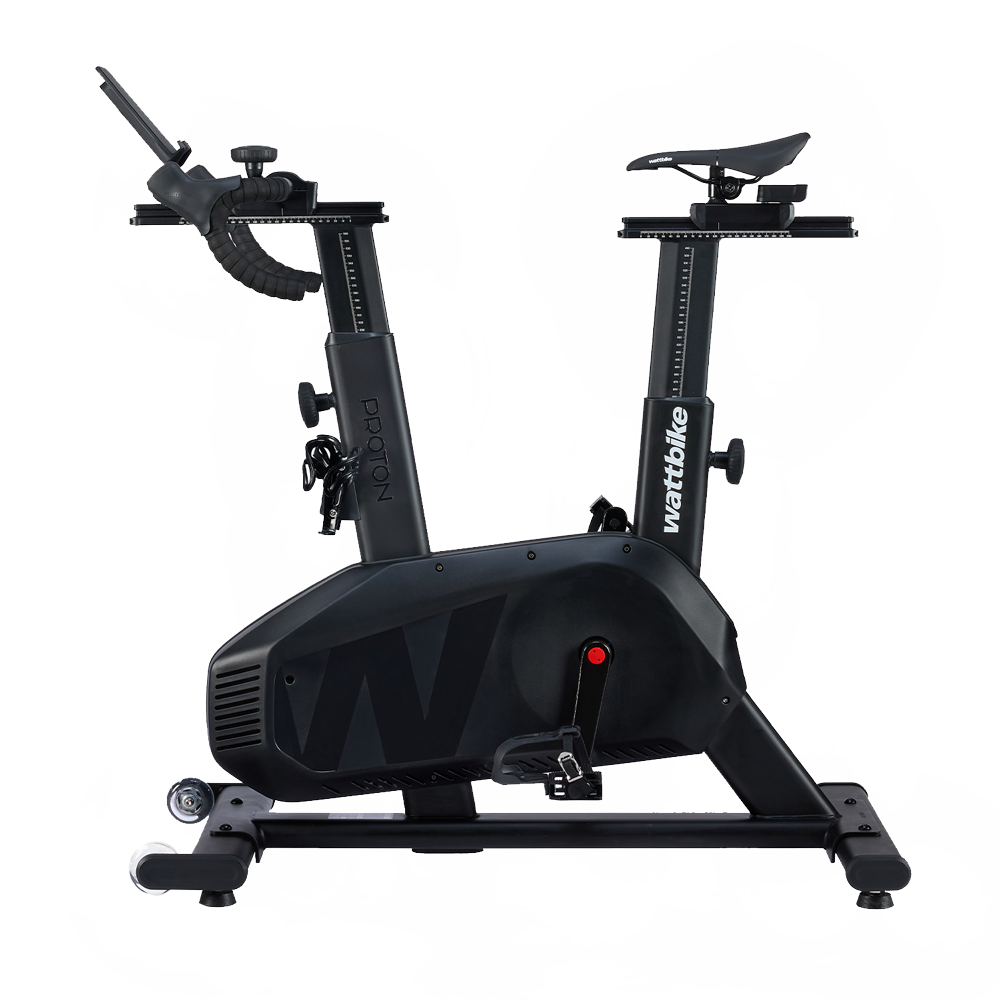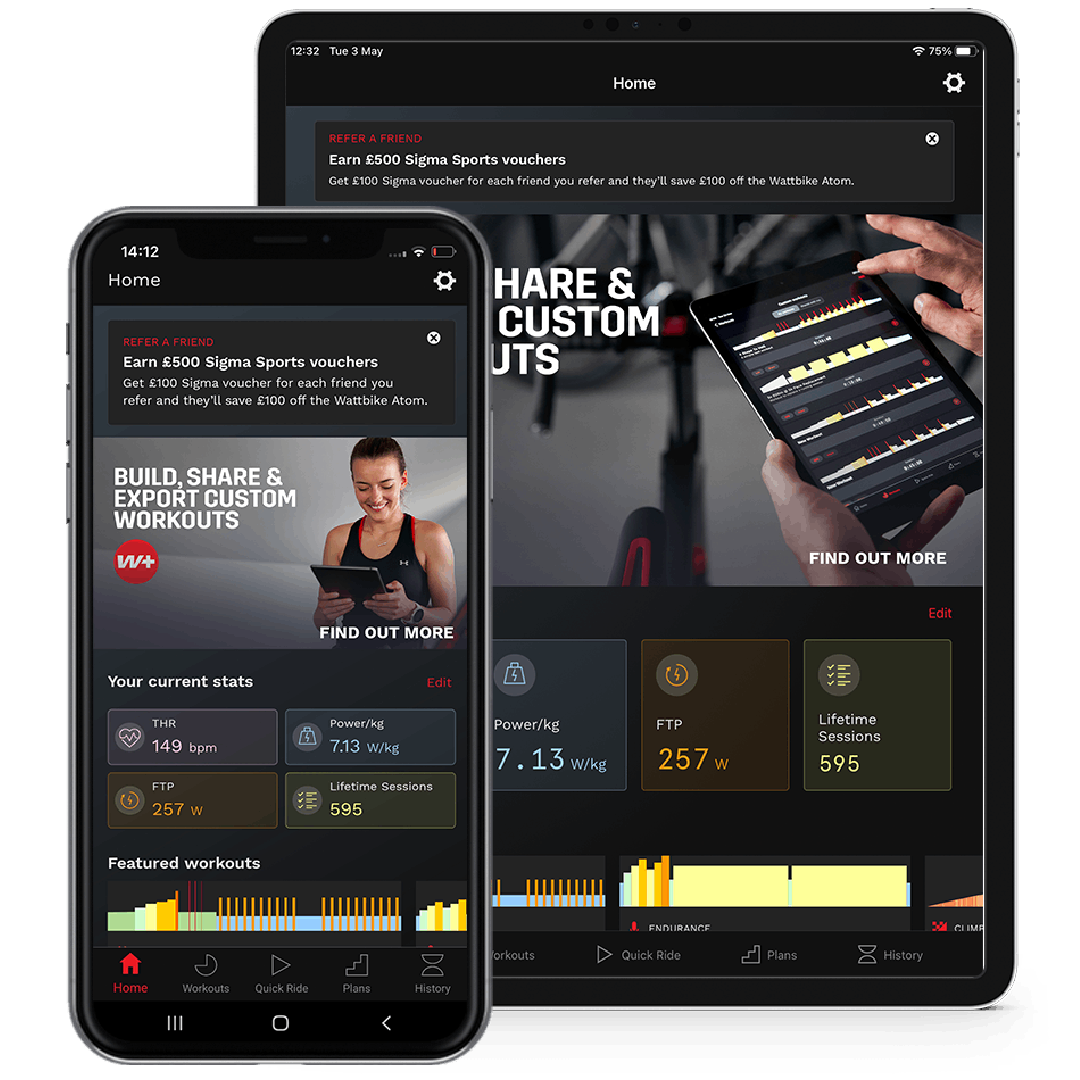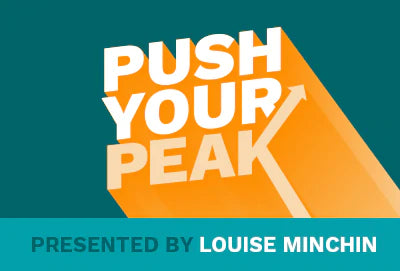Your Cart is Empty
shop
training & apps
support & services
news & information
How Sprint Training Improves your Speed on the Road
April 21, 2017 6 min read
Sprint cycling training is essential to help increase your speed and help you pull ahead during a sportive. Nearly every type of reader will use sprinting, whether for a short race, or even if your goal is a hundred mile sportive. There are still clear reasons why sprinting training can benefit your fitness. We’ll show you what you might want to consider and give top tips on how to improve your sprint.
Table of Contents:
- 7 Benefits of Sprint Cycling Training
- 3 Ways to Improve Your Sprinting
- When to Start Sprint Training
- Add Sprint Cycling into Your Training Plan
- Best Workouts for Sprint Training
7 Benefits of Sprint Cycling Training
Sprint cycling training is essential for every cyclist to master speed and cadence. You can improve your sprint cycling on an indoor bike trainer, to harness the benefits of indoor cycling. That way, your sprinting prowess will be showcased when it matters most.
You may think that some lucky cyclists are born with the innate ability to sprint, and physiology can play a part. However, we think that, with the help of the Wattbike Atom smart bike, everyone has the ability to become a better sprinter. More than just speed, there are other benefits to sprint training which you might not have considered:
- Building endurance - For a start, sprint training, 30 seconds of all-out effort followed by 4.5 minutes of recovery has been shown to have similar benefits to endurance training. So sprint training is a time efficient way of building your endurance for long events.
- Improve leg speed - Sprint training can improve leg speed, which in term can help you climb. Increased leg speed can improve your hill climbing by recreating a higher cadence and lower gears.
- Breaks monotony - Sprint training breaks up the monotony of otherwise repetitive cycling. This invigorates you and gets you motivated to face the next session. One of the benefits of training with a plan is that you can create a varied schedule to hit all the aspects of your sprint training.
- Improve cadence - Sprint training can improve your cadence, meaning you’ll make more pedal revolutions per minute. It can also enhance gear selection, which can help you optimise your power output.
- Limits fatigue- One single maximal sprint will engage nearly all of your muscle fibres but research has shown during repeated sprints your central nervous system regulates muscle fibre recruitment to limit fatigue. This still means that a series of sprint training efforts will hit more fibres than a steady ride.
- Hits the spots- When you sprint you recruit more of your muscle fibres to provide the maximum power to the pedals. For less intense efforts not all of your muscle fibres need to be engaged, so it could be said that sprint training hits the spots that other training misses.
- Improve reactions - Sprint training also has a positive effect on your bike handling skills, reaction times and alertness. If you ride at one moderate pace for most of your training you can start to feel sluggish and slow to respond, sprint training is a wake-up call your body might benefit from.

Almost every cyclist wants to win, whether they admit it or not! It could be a local race, a stage of a multi-day sportive or simply the cafe sprint, it’s always nice to know that you can beat the competition! When you incorporate sprint training into your workout routine, you can count on your ability when it matters most.
3 Ways to Improve Your Sprinting
Dedicated sprint training is a proven way to improve your speed and ability to race to the finish line. However, the outcome on the day of your sportive will be determined by your sprint strategy. We’ve detailed three of the best ways to make sure you’re at the front of the pack:
- Get your timing right - Sprint training should help you learn how much you have to give before you burn out. This is a key piece of insight to use on race day as it will help you judge when is the perfect time to make your break and start sprinting.
- Hold your position - When you’ve trained hard for a particular sprint and know you can give it your all, one of the worst things to happen is being blocked by other riders. Find the right position in the peloton as soon as you can. Don’t be so far back that you risk being boxed in. If you’re at the front, you risk leading other riders in for the win.
- Practice, practice, practice - Timing, positioning and gearing are all things you need to master before race day and there is no better way to improve than to practise sprint training. Whether it’s a sprint to the cafe on your local club run or a lower level race than the one you’re aiming for. Any opportunity to practise training for sprinting safely in a group will help your race day performance.
When to Start Sprint Training
Sprint training is high intensity and as such it requires recycling recovery time between sessions. For this reason, some coaches will advocate not using sprint workouts during a base building cycling phase.
- Sprint training has been shown to have a positive benefit on your endurance, so there is an argument for including at least one session a week. This is if you are cycling with a busy schedule, and are particularly short on training time, throughout the year.
- If sprinting and improving your speed is your target, then increase the number of sprint training or interval sessions you do in the pre-competition phase of your training. Increase this sprint training as you reduce the moderate intensity volume to allow more time for recovery.
If you are new to sprint training or high intensity training efforts (HIIT), then you are likely to get some muscle soreness and stiffness after your first few sessions. This is totally normal.
However, sprinting does increase the load on your ligaments and tendons. Therefore, if a pain is sharp or located in one specific area, such as knee pain while cycling, rather than a generalised ache, make sure you get it checked out.
Add Sprint Cycling into Your Training Plan
Sprint training can provide speed and endurance benefits, but only when you’ve successfully built it into your indoor cycling workouts and plans. There are three key types of sprint training, these can be added into longer endurance rides or sessions on their own:

Power Sprints - From A Slow Start
This type of sprint training helps you to develop explosive power from a slow speed. Good for attacking, races with standing starts, or for a climb.
- Get into a big gear and roll slowly till you are almost at a standstill.
- Either in or out the saddle, accelerate and hold it for 20 seconds or until you start to spin out.
- Ease back into an easier gear and spin for 5 minutes.
- Repeat up to 8 times.
Super Speed - Sprinting From An Already Fast Pace
If you are sprinting against other riders, then chances are you will already be moving fast. This helps you to accelerate to get the gap.
- Use a safe downhill slope to increase your speed.
- When you get close to the bottom of the hill, shift gears and increase your cadence to accelerate.
- Keep the speed up as you hit the flat, or bottom of the next hill if it is a rolling stretch of road.
Tabata Style Sprints - Repeated High Speed Efforts with Little Recovery
One sprint is seldom enough in a race situation. Try this sprint training method to help with repeated sprints out of corners or if you have to go again to make an attack stick. This sprint training is best suited to indoor cycling.
- Sprint hard for thirty seconds.
- Then pedal easily for thirty seconds.
- Repeat 5 times.
- Make sure you don’t stop pedalling between sprint training efforts, you need to maintain momentum to keep the speed high.
- Recovery spin for 5 minutes.
- Repeat up to 5 times in a session.
- Follow with a good cool down.
Best Workouts for Sprint Training
If you’re looking to improve your sprint training, try one of the following exercises. These sprint training workouts benefit you best when added to a structured training plan. That way, you can work on your overall goal of increasing cycling power or endurance, whilst adding that ‘edge’ to get you ahead of the competition.
Top tip - these sprint training sessions are high intensity, so we recommend the 20 minute warm up as the perfect way to prepare with our free Wattbike Hub cycling app.
- 5 x 30 seconds at 110 rpm, with 1 min rest at 90 rpm - work up to 3 sets (5 minutes rest at 90 rpm between sets).
- 8 x 25 seconds at 115 rpm, with 1 min rest at 90 rpm - work up to 3 sets (5 minutes rest at 90 rpm between sets).
- 12 x 20 seconds at 120 rpm, with 40 seconds rest at 90 rpm - work up to 3 sets (5 minutes rest at 90 rpm between sets).
Top tip - you can find a recommended air resistance for your Wattbike using the Pro and Trainer resistance tables, for these sprint training sessions your power should be at MMP, or up to 15% higher than MMP.
Tailored Training with Wattbike
At Wattbike, improving your cycling performance is easier than ever thanks to our cycling data. You’ll find tailored insights to your training every time you ride. Find advice on what to eat after cycling and improving your VO2 max to assist your training.
Also in Training

Why Benchmarking Matters
December 29, 2025 5 min read
Ever wonder why some athletes make rapid gains while others plateau? The secret isn’t just hard work, it’s benchmarking. Without knowing your starting point, training can be guesswork. The right test, from an FTP or ramp test for endurance to short maximal efforts for power, gives you the data to train smarter, not harder. Benchmarking transforms every session into a targeted, purposeful workout, accelerates progress, and ensures recovery is effective. Plus, regular re-testing keeps your training in sync with your improving fitness, so you stay ahead of stagnation and build sustainable, long-term performance. Discover how to train with clarity, confidence, and measurable results.

Balancing the Gym With Off-Feet Conditioning
December 18, 2025 5 min read
Building lasting fitness isn’t about training more - it’s about training smarter. We want tog ive you the tool toStart Strong, Stay Strong this 2026 and explain how to balance gym-based strength training with off-feet conditioning, to create a structured weekly routine that supports performance, recovery, and consistency. Whether you train three, four, or five days a week, this guide shows how the right training split helps you build strength, improve cardiovascular fitness, reduce injury risk, and maintain momentum throughout 2026 with a plan you can actually stick to with your Wattbike.

Motivation vs Discipline: How to Build Training Habits That Last All Year
December 17, 2025 4 min read
Motivation alone won’t make 2026 your strongest training year - consistency and structure do. Start Strong, Stay Strongexplains how building sustainable habits, using structured training plans, and relying on repeatable routines can help you train consistently, even when you don’t feel like it. From planning sessions like work appointments and setting SMART micro-goals to habit stacking and following structured Wattbike Hub programs, this guide shows how discipline, not willpower, turns intention into action, helping you improve fitness, endurance, and performance all year long.
Get the latest!
News, training tips, offers and more, straight to your inbox.








